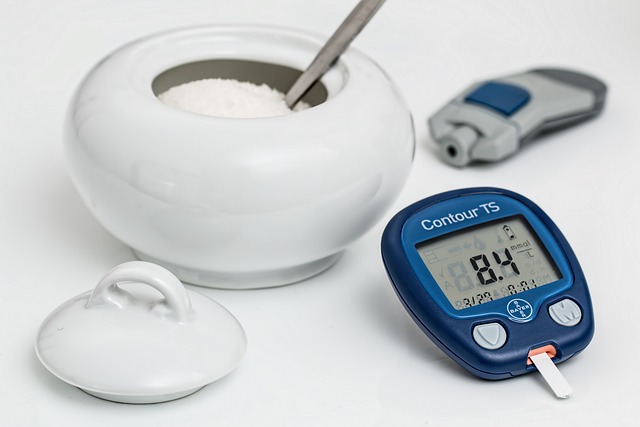Reversing Type 2 Diabetes

Diabetes is rapidly becoming a worldwide epidemic. Current estimates suggest that 8.5% of adults have diabetes. The condition is estimated to cause 1.5 million deaths per year with half occurring before age 70 (WHO 2022).
What Is Type 2 Diabetes?
Type 2 diabetes is a condition of poor blood sugar control. Insulin is the hormone produced by the pancreas to move blood sugar into cells. Insulin also works to turn off blood sugar production by the liver. For individuals with type 2 diabetes, insulin signaling starts to fail and blood sugar levels start to rise. This failure of insulin signaling is called insulin resistance. As the condition progresses, blood sugar control worsens and blood sugar levels continue to climb.
Once blood sugar levels cross a specific threshold, an individual is said to have type 2 diabetes. Individuals that have higher than normal blood sugar, but aren’t yet diabetic, are said to have prediabetes. Type 1 diabetes is different from type 2. Type 1 diabetes is an autoimmune condition that requires lifelong insulin injections due to loss of production in the pancreas. Unlike type 2 diabetes, type 1 is not reversible through diet or lifestyle.
Historically, type 2 diabetes was considered a progressive disease, one that keeps getting worse over time. Typically, medications are prescribed in an attempt to slow the progression of the condition. However, recent data has started to suggest an alternative approach: type 2 diabetes may be reversible.
My Experience with Patients Reversing Diabetes
In my own practice, I’ve had several patients who have reversed their diabetes. In all cases, patients had made radical changes to their diet and lifestyle in order to support their health. Typically, they reduced sugar, carbohydrates and portion sizes while incorporating more physical activity.
Research on Reversing Type 2 Diabetes
Standard “first-line” therapy for treating type 2 diabetes has a remission rate of 0.24%. It’s worth noting that standard therapy for type 2 diabetes doesn’t even list as a goal the reversal of the condition. Since we know reversal is possible, it’s worth questioning if our current “first-line” therapy for diabetes is really the best approach.
Reversal Through Bariatric Surgery
What first highlighted the real possibility of reversing type 2 diabetes was bariatric surgery for treating obesity. One study found that 75% of diabetic bariatric surgery patients had remission of their diabetes as compared to none of the patients who just received standard diabetes medications (Mingrone 2012). While the findings are intriguing, bariatric surgery is not without complications and long-term consequences.
Research shows that one in ten bariatric surgery patients has a significant complication (Livingston 2004), most commonly aspiration pneumonia or anastomosis. Anastomosis is a connection that opens between the intestines and another location, often leaking digestive fluids. These leaking fluids can cause severe damage or even death (Arterburn 2020). Bariatric surgery also commonly causes nutritional deficiencies and increased bone turnover that can lead to osteoporosis (Paccou 2022). As such, if a safer approach for reversing type 2 diabetes is available, it could present significant advantages over bariatric surgery.
Reversing Type 2 Diabetes Through Dietary Strategies
Fortunately, other approaches for reversing type 2 diabetes have also been studied. Two dietary approaches appear to hold promise for reversing the condition: low-calorie diets or low-carbohydrate diets.
Low-Calorie Diets
Low calorie diets have been shown to reverse aspects of diabetes as early as the 1970s. A small clinical trial with type 2 diabetes patients that were severe enough to need insulin found benefits with a modified fast. The patients consumed only protein with added vitamins and minerals. On average, by the seventh day of the fast, the patients were able to stop their insulin medication (Bistrian 1976).
A similar study that compared a longer “protein-only” diet with gastric bypass surgery found both techniques to be similarly effective for improving insulin resistance and blood sugar control (Hughes 1984). Patients that were able to lose more weight had blood sugar levels that were, on average, almost below the threshold for a diagnosis of diabetes. Some patients in the study even achieved “normal” blood sugar levels. The biggest challenge for patients was maintaining the restrictive eating patterns long term.
One of the first studies that focused explicitly on achieving remission of type 2 diabetes through diet and lifestyle was published in 2012 (Gregg 2012). The intervention included a low-calorie diet, between 1200 and 1800 calories. It also included physical activity, social support and counseling. Remission rates were 11.5% at one year, but dropped to 7.3% by four years. Still, the success rate for remission was significantly higher than the standard approach for treating diabetes.
A much smaller study using a more restricted 600-calorie-per-day diet found normalization of blood sugar levels within one week in diabetic patients (Lim 2011). Both pancreatic insulin release and liver responses were normalized over the course of the eight-week study.
One of the most successful long-term studies for reversing diabetes was the DiRECT study (Lean 2019). Patients were given a liquid diet that included 850 calories per day for 3-5 months followed by food reintroduction and support for continued weight loss maintenance. At one year, 46% of patients in the treatment group had reversed their diabetes. The study makes it clear that reversing type 2 diabetes, in many cases, is an achievable goal.
Low-Carbohydrate Diets

Low-carbohydrate diets do not restrict calories. They focus primarily on replacing carbohydrates with fat and protein. Low-carbohydrate diets restrict grains, beans, sugars, starchy vegetables and fruit. While the data for low-carbohydrate diets is not as robust as for low-calorie diets, it suggests that diets that limit carbohydrates the most have the greatest success (Snorgaard 2017). When carbohydrates are restricted under 50 grams per day, the diet is typically considered a ketogenic diet.
A trial of a ketogenic diet was compared to the standard American Diabetic Association’s recommended diet (Saslow 2017). In patients with diabetes, 55% on the ketogenic diet were no longer diabetic by 32 weeks as compared to none on the standard diet. A longer study that compared a ketogenic diet to a moderate carbohydrate, low-fat, calorie-restricted diet found greater benefits with the ketogenic diet (Saslow 2017). At 12 months 78% of participants on the ketogenic diet had reversed their diabetes as compared to 31% on the control diet.
A somewhat larger study compared a ketogenic diet to “care as usual” for diabetic patients (Hallberg 2018). By one-year, 60% of patients on the ketogenic diet had reversed their diabetes and were off medication or taking just metformin as compared to no significant improvements for the control patients.
Conclusion
From the latest research it is clear that reversing type 2 diabetes is an achievable goal for many patients. However, the biggest challenge long term remains adherence to dietary and lifestyle patterns needed to sustain the improvements. As research on diabetes reversal continues, hopefully protocols will continue to be simplified so as to help maximize results with easier-to-implement approaches.



